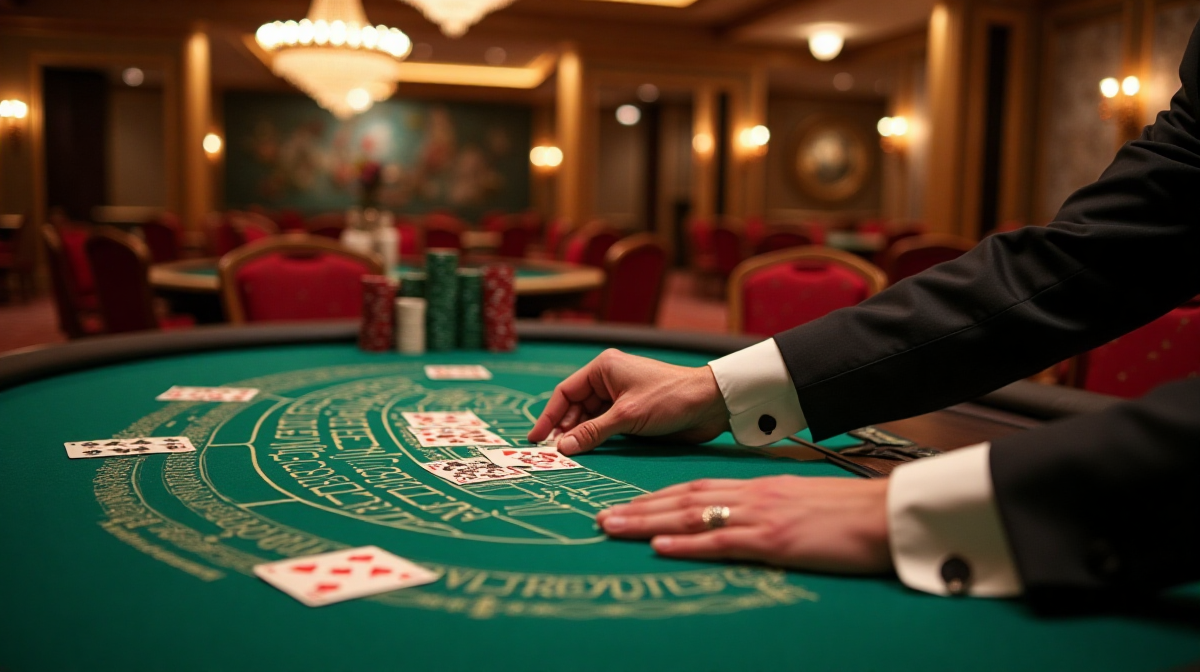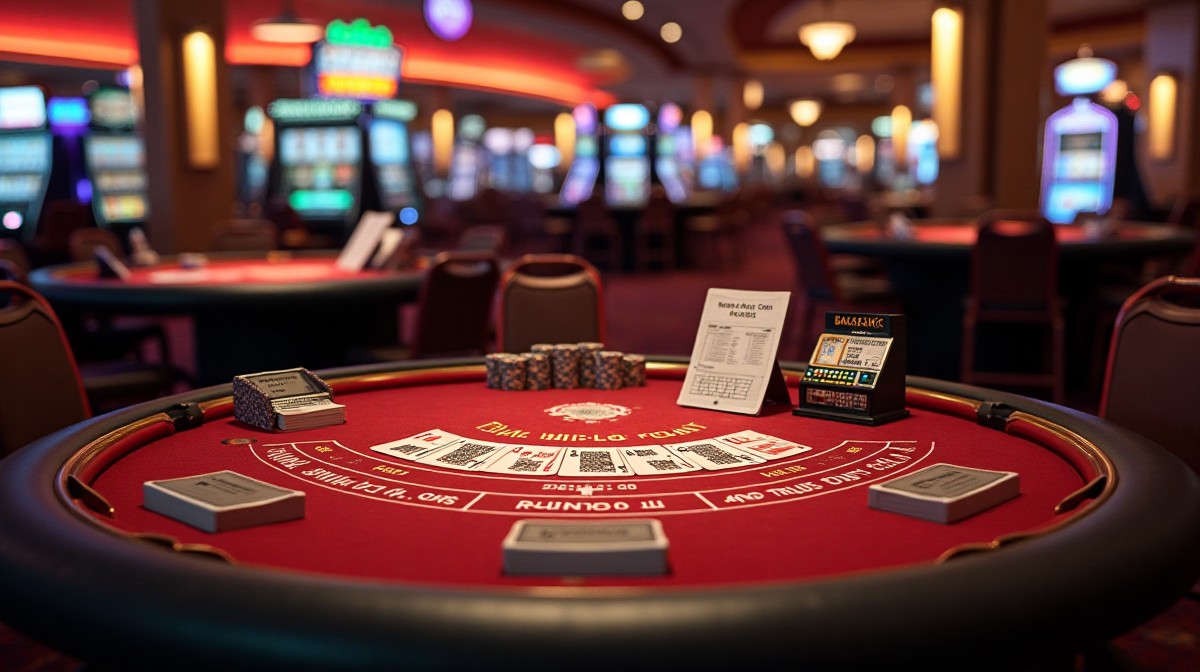Blackjack Strategy: 5 Tips to Win Big
What is Blackjack & Why is it Popular?
Blackjack, also known as 21, is a casino game with a rich history and enduring appeal. Its popularity stems from a unique blend of skill and chance. Unlike pure games of luck like slots, blackjack allows players to influence their outcomes through strategic decision-making. This element of control, combined with its relatively simple rules, makes it a favorite among both novice and experienced casino-goers. Many are also exploring alternative betting platforms like a Betting Exchange, offering different dynamics to traditional casino games.
Debunking Blackjack Myths: It's Not Just Luck
A common misconception about blackjack is that it's solely based on luck. While the initial deal of the cards is random, the subsequent decisions a player makes – whether to hit, stand, double down, or split – significantly impact their chances of winning. Skillful play can drastically reduce the house edge, making blackjack one of the most favorable casino games for the player. Understanding the nuances of strategy is key, and this is increasingly relevant as platforms like betxchange gain traction, demanding a more informed player base.
Setting Realistic Expectations: Understanding the House Edge
Even with perfect strategy, the house retains a slight edge in blackjack. This means, over the long run, the casino is expected to win a small percentage of all wagers. However, the house edge in blackjack is relatively low compared to other casino games, often less than 1% with optimal play. It’s crucial to understand this inherent advantage and approach the game with realistic expectations, avoiding the pursuit of guaranteed wins. It’s also worth noting that keeping track of scores in fast-paced games like Crazy Time score can also be beneficial to understand the probabilities.
Master Basic Blackjack Strategy
Understanding the Basic Strategy Chart
The foundation of any successful blackjack player is a firm grasp of basic strategy. This isn't about memorizing every possible scenario, but rather understanding the mathematically optimal play for every combination of your hand and the dealer’s upcard. A basic strategy chart visually represents this information, guiding you on the best decision to make in each situation.
When to Hit, Stand, Double Down, and Split
Basic strategy dictates when you should hit (take another card), stand (end your turn), double down (double your bet and take one more card), or split (separate a pair into two individual hands). For example, you should generally hit if your hand totals 11 or less, and stand if your hand totals 17 or more. Doubling down is often advantageous when you have a strong starting hand, like 11, and the dealer has a weak upcard. Splitting pairs, particularly Aces and 8s, is crucial for maximizing your potential winnings.
The Importance of Knowing When to Deviate
While basic strategy is a great starting point, experienced players may deviate in specific situations based on card counting or other advanced techniques. These deviations are minor adjustments to the basic strategy that can further improve your odds.
Resources for Learning Basic Strategy
Numerous online resources provide basic strategy charts and tools. Searching for blackjack basic strategy chart will yield a wealth of information, including interactive trainers and downloadable charts.
Bankroll Management – Playing Smart with Your Money
Setting a Budget Before You Play
Before you even sit down at the blackjack table, establish a budget and stick to it. Decide how much money you're willing to risk and treat that amount as entertainment expenses. Never chase losses or bet more than you can afford to lose. This is particularly important when exploring alternative gaming avenues, such as tracking Crazy Time live tracker results to inform bets.
Unit Size: How Much to Bet Per Hand
Determine a unit size – a fixed percentage of your bankroll that you'll bet on each hand. A common recommendation is to bet 1-2% of your bankroll per hand. This helps to weather losing streaks and ensures you don't deplete your funds too quickly.
Avoiding the Gambler's Fallacy & Chase Losses
The gambler's fallacy is the belief that past events influence future outcomes in games of chance. In blackjack, each hand is independent, and previous results have no bearing on the next deal. Similarly, chasing losses – increasing your bets in an attempt to recoup previous losses – is a dangerous strategy that often leads to further losses.
When to Walk Away: Knowing Your Limits
Set both win and loss limits. If you reach your win limit, cash out and enjoy your profits. If you reach your loss limit, walk away and accept the loss. Discipline is crucial for long-term success.
Understand the Dealer's Rules & Vulnerabilities
The Dealer's Strict Hand: Why It Matters
The dealer in blackjack must follow a strict set of rules, typically hitting on 16 or less and standing on 17 or more. This rigidity creates vulnerabilities that skilled players can exploit.
Exploiting the Dealer's Forced Hits on 16 & Stands on 17
The dealer's obligation to hit on 16 means they are more likely to bust (exceed 21) when holding a weak upcard. Conversely, their standing on 17 limits their ability to improve a strong hand. Knowing this influences your decision on when to hit or stand.
Dealer Shows? Leverage The Information
When the dealer shows an upcard, you have valuable information. A low upcard (2-6) suggests the dealer is more likely to bust, while a high upcard (7-Ace) indicates a stronger hand. Adjust your strategy accordingly.
How Dealer Rules Change Your Strategy
Some casinos require the dealer to hit on a soft 17 (a hand containing an Ace that can be counted as 1 or 11). This rule slightly increases the house edge, and you should adjust your strategy accordingly, typically by being more conservative with your bets.
Smart Use of Splitting Pairs
Which Pairs to Always Split
Aces and 8s should always be split. Splitting Aces gives you two chances to draw a 10-value card for a blackjack, while splitting 8s avoids the potential of a poor hand totaling 16. Platforms like a Betting Exchange don't offer the same strategic options as blackjack, highlighting the importance of mastering these nuances.
Pairs to Consider Splitting Based on Dealer's Upcard
Pairs like 2s, 3s, 6s, and 7s should be split depending on the dealer’s upcard. Generally, split these pairs if the dealer shows a low upcard (2-6).
Pairs You Should Never Split
Never split 10s or 5s. Splitting 10s breaks up a strong hand, while splitting 5s often results in two weak hands.
Resplitting & Three-Card Charlie Considerations
Some casinos allow resplitting pairs, giving you even more opportunities to improve your hand. Three-Card Charlie, a rule where a hand totaling 21 with three cards automatically wins, can also impact your strategy.

Card Counting - A More Advanced Technique
What is Card Counting & How Does It Work? – Disclaimer: legality varies
Card counting is a technique used to track the ratio of high cards (10s, Jacks, Queens, Kings, Aces) to low cards (2-6) remaining in the deck. By knowing this ratio, players can gain an edge by increasing their bets when the deck is rich in high cards and decreasing them when it’s rich in low cards. Disclaimer: Card counting is not illegal, but casinos may ask you to leave if they suspect you are doing it.
The Hi-Lo System: A Popular Starting Point
The Hi-Lo system is a popular and relatively simple card counting method. High cards are assigned a value of -1, low cards a value of +1, and neutral cards (7-9) a value of 0. Players keep a running count as cards are dealt.
Understanding True Count and Running Count
The running count represents the overall balance of high and low cards. The true count is a more accurate measure that adjusts the running count based on the number of decks remaining in the shoe.
The Risks and Challenges of Card Counting
Card counting is a challenging skill that requires practice and concentration. Casinos are aware of card counting and employ various countermeasures to detect it. Additionally, even with card counting, variance can still lead to losing streaks.
Ethical Considerations of Card Counting
While not illegal, card counting is often frowned upon by casinos. Some players consider it an unethical advantage, while others view it as a legitimate skill.

Recap of the 5 Winning Tips
To recap, the five winning tips for blackjack success are: mastering basic strategy, practicing effective bankroll management, understanding the dealer's rules, skillfully splitting pairs, and (for the adventurous) exploring card counting. Remember, even with these strategies, games like blackjack and even those involving chance like Crazy Time score require a degree of risk management.
Practice Makes Perfect: Hone Your Skills
Blackjack is a game that rewards practice. Utilize online simulators and free games to hone your skills and become comfortable with basic strategy and card counting techniques.
Responsible Gambling – Have Fun!
Finally, remember to gamble responsibly. Set limits, stick to your budget, and prioritize having fun. Blackjack should be an enjoyable experience, not a source of stress or financial hardship.

